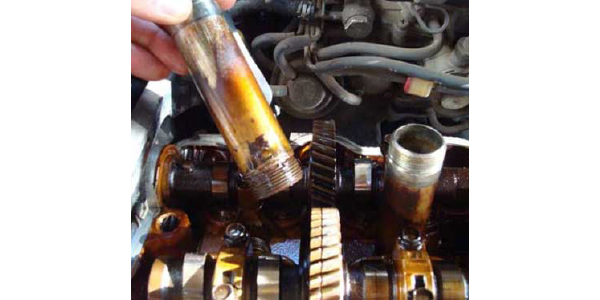
It may be surprising to learn that the leading causes of ignition coil failures have nothing to do with the coils themselves. Ignition coil damage is often caused by underlying issues never addressed in engine misfire repairs. Issues include spark plug gapping, leaking valve covers, or moisture intrusion.
A proper spark plug gap is crucial to an ignition system and the health of an ignition coil. A worn or excessive gap will cause an ignition coil to work overtime, using more voltage to bridge the gap and create a spark inside the cylinder. This increase in voltage stresses the internals of not only the ignition coil but, in certain circumstances, the driver of the ECU. When the driver in the ECU fails the coil will no longer create spark, leaving a dead cylinder.
To ensure proper spark combustion and to prevent coil damage, refer to the spark plug manufacturer’s gap specifications. It is important to remember that many spark plugs come pre-gapped according to the applications that correspond to each spark plug part number. In the event that there is a coil failure due to an excessive gap, the spark plug and ignition coil should be replaced. It is also recommended that the ECU driver is verified for proper operation.
Moisture is another cause of ignition coil damage, coming from the most likely and unlikely of places. The most likely is an oil leak from the valve cover gasket. On many COP-style engines the spark plug and ignition coil are mounted into a tube that is a part of the valve cover. Over time, the seal between the valve cover and that spark plug tube can fail, causing oil to leak in and fill up around the spark plug and ignition coil. This in turn can lead to spark plug and ignition coil failure. Be sure to fix the root cause of the oil leak, so this problem does not recur with the new ignition parts installed.
Water intrusion is an unlikely, and therefore, overlooked cause of ignition coil damage. In some vehicles, A/C condensation can build up and drip directly onto ignition coils, filling up spark plug holes with water. To solve this problem, some ignition coil manufacturers pre-apply or include a marine-grade di-electric grease with their product. This gives a better seal between the coil-on-plug boot and the spark plug terminal nut, preventing moisture from interfering with voltage transfer and spark generation.
Taking steps to check for oil leaks, moisture, and spark plug issues will prevent serious engine damage and other ignition-related headaches. There are thousands of reasons for misfire codes. Don’t stop at ignition coils when diagnosing them.
For more information or questions about ignition coils, you can reach out to the NGK Technical Support line by calling 877-473-6767 or visit them on the web at www.ngksparkplugs.com/ignitioncoils.













